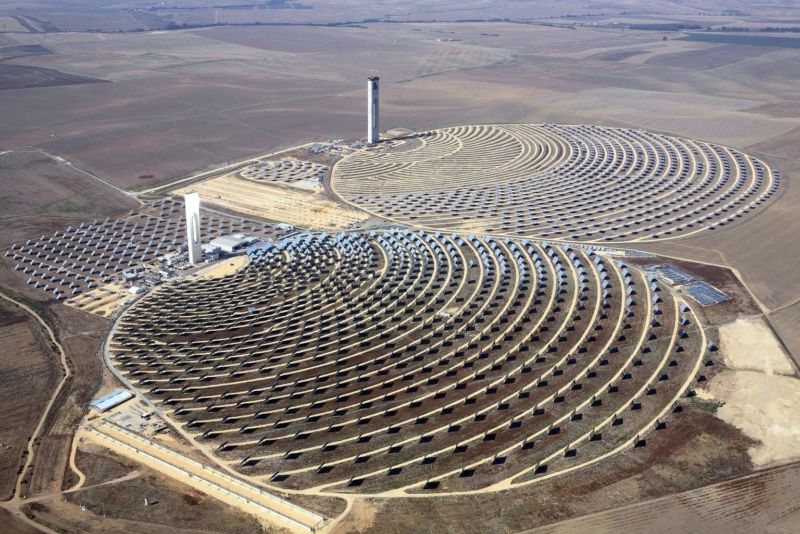New material will help make thermal solar power plants more efficient.

Spanish solar thermal power station Gemasolar. Its capacity allows to provide electricity to 25,000 households. The
sun, wind, water - free and renewable energy sources. The main thing is the technology for generating electricity from these sources. It should be effective and relatively inexpensive. The efficiency and cost of technologies that form the basis of green energy are characteristics that can be improved.
If we recall the solar cells used to produce electricity from solar energy, then their cost gradually falls, and therefore, the cost of "solar electricity" decreases. But “not photovoltaic cells are the same” - there is another technology for obtaining energy from the sun's rays. These are thermal solar power stations.
They work thanks to parabolic mirrors that focus the energy of the Sun into a beam, which is then sent to a tank of salt. The latter turns into a melt, starting to play the role of a coolant. Coolant transfers heat energy to water, which turns into superheated steam. Well, steam rotates the turbine, generating an electric current.
So, the cost of electricity produced at thermal solar power plants is higher than the cost of energy, which is obtained using photovoltaic cells. In addition, the number of regions where you can use this method of obtaining energy is not too large. All this leads to the fact that thermal solar power plants are not too common.
By the way, under certain conditions, instead of water and steam, you can use "supercritical gas" - carbon dioxide. True, working with it requires temperatures of about 1000K, which is not always practically achievable. The fact is that many metals melt at such a high temperature. Others that do not melt will willingly react with carbon dioxide. But the goal is attractive - the fact is that when using carbon dioxide, the efficiency of such stations increases by 20%.
Relatively recently, information appeared about the possible use of two materials in “thermal solar energy” that do not melt at the temperature indicated above and do not react with carbon dioxide. These are tungsten and zirconium carbide (a chemical compound of zirconium metal and carbon with the formula ZrC).
Both materials have a very high melting point and excellent thermal conductivity. Moreover, at high temperatures, these two materials practically do not expand, retaining their hardness. In general, both candidates are good, but their production process and cost are quite high.
Initially, scientists who study the problem of thermal solar energy began to work with tungsten carbide. It can be sintered, giving the sintered powder almost any shape. Next, the material is placed in a bath with a melt of copper and zirconium. The molten mixture fills the pores of the original material, zirconium reacts with tungsten carbide, replacing the metal. Copper forms a thin film on the surface of the newly formed material.
Tungsten, when released, fills the pores. Thus, the material retains its original shape, but its composition changes. All this withstands very high temperatures without changing the strength characteristics. In many ways - thanks to the pores filled with tungsten.
Scientists have concluded that copper, the film of which covers the resulting material, can react with carbon dioxide to form copper oxide and release carbon monoxide (carbon monoxide). But, as it turned out, if small amounts of carbon monoxide are added to supercritical carbon dioxide, the resulting mixture will suppress the dangerous reaction. This is confirmed experimentally.
It is clear that in order for a super-efficient thermal solar power station to work normally, there should be a lot of material discussed above. Unfortunately, scientists do not speak about the cost price of a zirconium carbide heat exchanger, but insist that it will not be too expensive.
As a result, new power plants can become so efficient that they will easily compete with both photoelectric power stations and conventional ones that run on combustible minerals.

It is worth noting that now thermal power plants operating on solar energy are still being built. They are located in regions with a very high level of insolation, for example, the United Arab Emirates and Israel. As for the latter, one of the largest power stations of this kind with a capacity of 110 MW operates on its territory.
Nature , 2018. DOI: 10.1038 / s41586-018-0593-1
